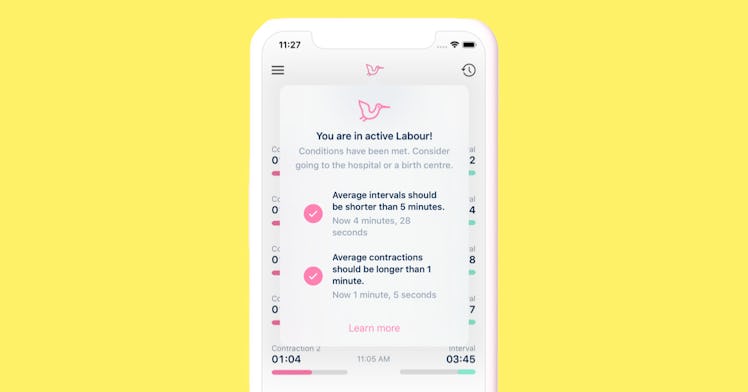The Best Contraction Timers and How to Use Them
These apps make it much easier to track what's going on when there's... a lot going on.

Without a contraction timer, many men believe the onset of labor will be obvious, having seen it countless times on TV and in movies. But the real thing is much more subtle. Wing it and you risk arriving too early, only to be sent home. Too late, and there you are, cuffs rolled up, catching your baby in the back of a cab. There’s no hard-and-fast rule on how long labor can last, or how long it takes until she’s fully dilated and ready to push, but the best contraction timers can give you some idea of how labor is progressing. Their tracking of the length, frequency, and the intervals between contractions lets you skip the mental math, focus on your partner, and still have a to-the-second record of occurrence. Some contraction trackers even alert you when it’s time to head to the hospital. Regardless of which contraction app you select, even the most basic can help you gauge how quickly labor is progressing, which will help you determine on your own when to go seek expert help.
“People have always timed contractions, but [contraction timers are] a simplified way to do that,” says Dr. Sidney Wu, a doctor of obstetrics and gynecology at New York’s Weill Cornell Medicine. The apps “can be helpful as an adjunct. Are they necessary? No. But they’re not harmful. I would caution people to of course to use their own judgment and not just go according to what the app says. Use your common sense. Call your doctor. Everyone’s labor is different. The apps can be helpful and provide general guidance.”
Early labor can last a while. That’s why Wu says it’s important not to go to the hospital too soon after contractions begin. You’ll either be sent home or Mom will be stuck in a hospital bed for way too long. “Stay at home until you’re really uncomfortable,” Wu says. A good rule of thumb is to call the doctor when contractions follow what Wu calls “The 5-1-1 Rule”: they’re every five minutes, lasting one minute, and have been going on for one hour.
If this isn’t your first baby, be prepared to head to the hospital earlier after the onset of contractions. “After you’ve had your first baby, the body is much more efficient,” says Wu, “so call earlier because the baby can come much faster.”
This article was originally published on